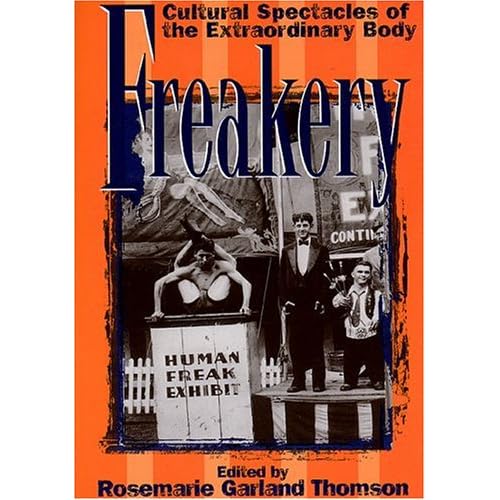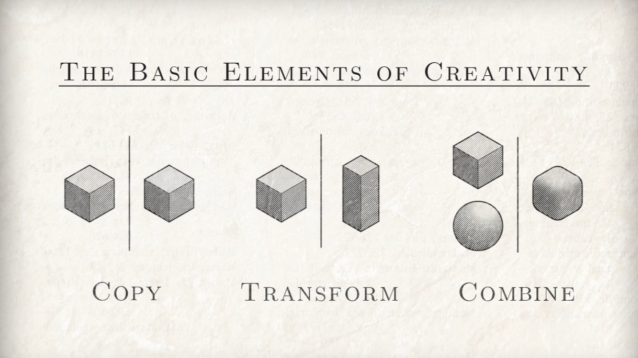“Originality is nothing but judicious imitation. The most original writers borrowed one from another. The instruction we find in books is like fire. We fetch it from our neighbor's, kindle it at home, communicate it to others, and it becomes the property of all.”Voltaire
A while back a friend told me he really
liked one of my ideas in an act I perform. It was a particular apparatus I had
been developing over a three year period starting in early 2002. I thanked him. Then he told me he was going to make one for his own show. I said
nothing. He asked me if it was OK. I said I didn’t feel good about it, but
didn’t know what I could do to stop him. Now it is part of the finale in his
show.
I collect and read circus books. The main
part of the act my friend liked, the main skill, not the apparatus I perform
the skill on came from a book. The book was a celebration of Robert Ripley, the
man behind the world famous Ripley’s Believe it Not. The picture was of a man
who could sit on a whiskey glass, with his legs behind his head. I later saw
the same trick on a postcard where a man, calling himself Uncle Sam, sat on a
little perch in the same posture. A man in almost the same posture, though not actually
balancing but holding on, featured on the cover of a book called Freakery: Cultural Spectacles of the Extraordinary Body. Let alone that the feat has been "performed" within the Yoga tradition for who knows how long.
 |
| B K S Lyengar. |
So in the end I had also “borrowed”
something to create that act, even if I had specifically “dreamt” up the
apparatus I performed it on. Does this mean there are no original acts?
Perhaps not.
But still people who see me get the feeling I am presenting something new and original, yet steeped in the Showman's Tradition.
I do think my act is original, but to understand this we might have to look a little closer at what that actually means.
Perhaps not.
But still people who see me get the feeling I am presenting something new and original, yet steeped in the Showman's Tradition.
I do think my act is original, but to understand this we might have to look a little closer at what that actually means.
In my presentation of the act: the music, specially
created for the act by a fellow artist and dear friend Mikelangelo, gives form and structure to the flow of the act; a sequence of tricks mastered over the years;
my physicality; my visual gags; my running gag of confetti throwing;
and the final Dream Schpiel I deliver upon reaching the summit of the can stack - this symphony of elements united makes my act original. Not because the elements each sprouted into existence in a vacuum, but in their novel recombination and in my unique execution of it all.
my physicality; my visual gags; my running gag of confetti throwing;
and the final Dream Schpiel I deliver upon reaching the summit of the can stack - this symphony of elements united makes my act original. Not because the elements each sprouted into existence in a vacuum, but in their novel recombination and in my unique execution of it all.
For a long time I have been saying that if someone claims to have created something genuinely new, they just haven't studied history enough. This does not mean that there are no new or original acts created, on the contrary new and novel combinations and evolutions appear all the time, but what is seen as new by crowds are sweet remixes of the great showmen of the past - whether the creator knows it or not.
(Pic from Brain Pickings via Everything is a Remix.)
On a whole, Crowds ("common man") have problems with that which is totally new. People like the idea of newness and novelty, but they do seem to prefer it if the "new" is firmly placed within some recognizable framework. But within a framework or tradition the very thing that makes it a tradition is the shared evolution of the idea or art form. Each new creator is borrowing from the same language and the same ideas. So to think of something brand new within a tradition is a contradiction.
Further, there are two sides to originality:
- One, favored by the Crowds, is newness within a tradition: original, cutting edge, fresh.
- The second is absurd or irrational newness: mad, freaky, aberration, kooky.
- One, favored by the Crowds, is newness within a tradition: original, cutting edge, fresh.
- The second is absurd or irrational newness: mad, freaky, aberration, kooky.
At the end of the second half of the last century I traveled as a street performer and one of my main obstacles was the inherent freakishness of my contortions and dislocations. As I bent and twisted, parents covered their children's eyes or simply walked away. Of course the children never had a problem with it. To them I was just like a character from any one of their favorite cartoons. I worked hard on my performance style and presentation and slowly but surely I found a slapstick, happy go lucky attitude which made the crowds tolerate my freakishness. Inspired by Keaton, Chaplin, and Arbuckle, what had been freaky fell within the framework of a tradition which crowds seemed to enjoy enough to stay for, and as I used to say in my street show: A show worth staying for is worth paying for.
(Of course Freakishness is a tradition in itself. Freakshows and Sideshows was where I found my feet as a performer fresh out of my Magician Fathers wings, but that is a different story.)
(Of course Freakishness is a tradition in itself. Freakshows and Sideshows was where I found my feet as a performer fresh out of my Magician Fathers wings, but that is a different story.)
“Nothing is original. Steal from anywhere that resonates with inspiration or fuels your imagination. Devour old films, new films, music, books, paintings, photographs, poems, dreams, random conversations, architecture, bridges, street signs, trees, clouds, bodies of water, light and shadows. Select only things to steal from that speak directly to your soul. If you do this, your work (and theft) will be authentic. Authenticity is invaluable; originality is non-existent. And don’t bother concealing your thievery - celebrate it if you feel like it. In any case, always remember what Jean-Luc Godard said: “It’s not where you take things from - it’s where you take them to.”Jim Jarmusch.
If originality is 'merely' clever recombinations of old ideas,
emotions and techniques what then is it that makes certain art and
artists feel so new and 'original?' I think the answer lies in the artist's ability to
make his material ring true in the hearts of Crowds.
Great art resonates with people. It stirs emotions and connects the beholder with ideas sublimely expressed by the artist in a way that feels new, illuminating and most importantly truthful. Truth is not something that is, but something that happens, an individual experience in the beholder.
Truth is only expressed through art when it speaks to a Crowd. If it works it becomes truthful, undeniable and beautiful. A truth of this nature creates some sort of change in the viewer. A change in the way they perceive the world, or simply bringing forth a very specific or sublime emotion. The better the artist is at communicating with the Crowd, the more original the Crowd's experience becomes, and hence the more original the artist is perceived to be.
Great art resonates with people. It stirs emotions and connects the beholder with ideas sublimely expressed by the artist in a way that feels new, illuminating and most importantly truthful. Truth is not something that is, but something that happens, an individual experience in the beholder.
Truth is only expressed through art when it speaks to a Crowd. If it works it becomes truthful, undeniable and beautiful. A truth of this nature creates some sort of change in the viewer. A change in the way they perceive the world, or simply bringing forth a very specific or sublime emotion. The better the artist is at communicating with the Crowd, the more original the Crowd's experience becomes, and hence the more original the artist is perceived to be.
By reading circus books and studying the history of Showmen past and present, I am hoping to become the Showman of the future, the New Old School.
"If I have seen further it is by standing on the shoulders of giants."
Isaac Newton (from his days as an acrobat in the Sideshow.)



Hi Frodo,
ReplyDeleteThanks for the fine article. A promoter in Stockholm (F.Bronnet) invited me to see George Carl in his Caberet circa 1980. In the first half George did little things that people knew as "Ira" moves. I figured I had to have seen George on tv as a kid. I checked the program and George had been on Ed Sullivan around 100 times. Often with Johnny Puleo's harmonica slapstick troupe - my very, very favorite act!!! Then I got to know George a bit. Only recently via the great youtube ... I looked up Johnny Puleo. Sure enough.... one can see that very likely, Puleo was George's role model as "George" moves are clearly derived from Puleo. That's show business. We are all in it together. Ebb and flow. Everything old is new again - depending how you combine the elements as per your article. x ira
You are lucky to have seen George Carl live. At least now in the age of the internet we can enjoy several versions of his act so that we can see how he adapts to various settings.
ReplyDeleteThanks for bringing up Johnny Puleo. Awesome stuff. Hope you are well.